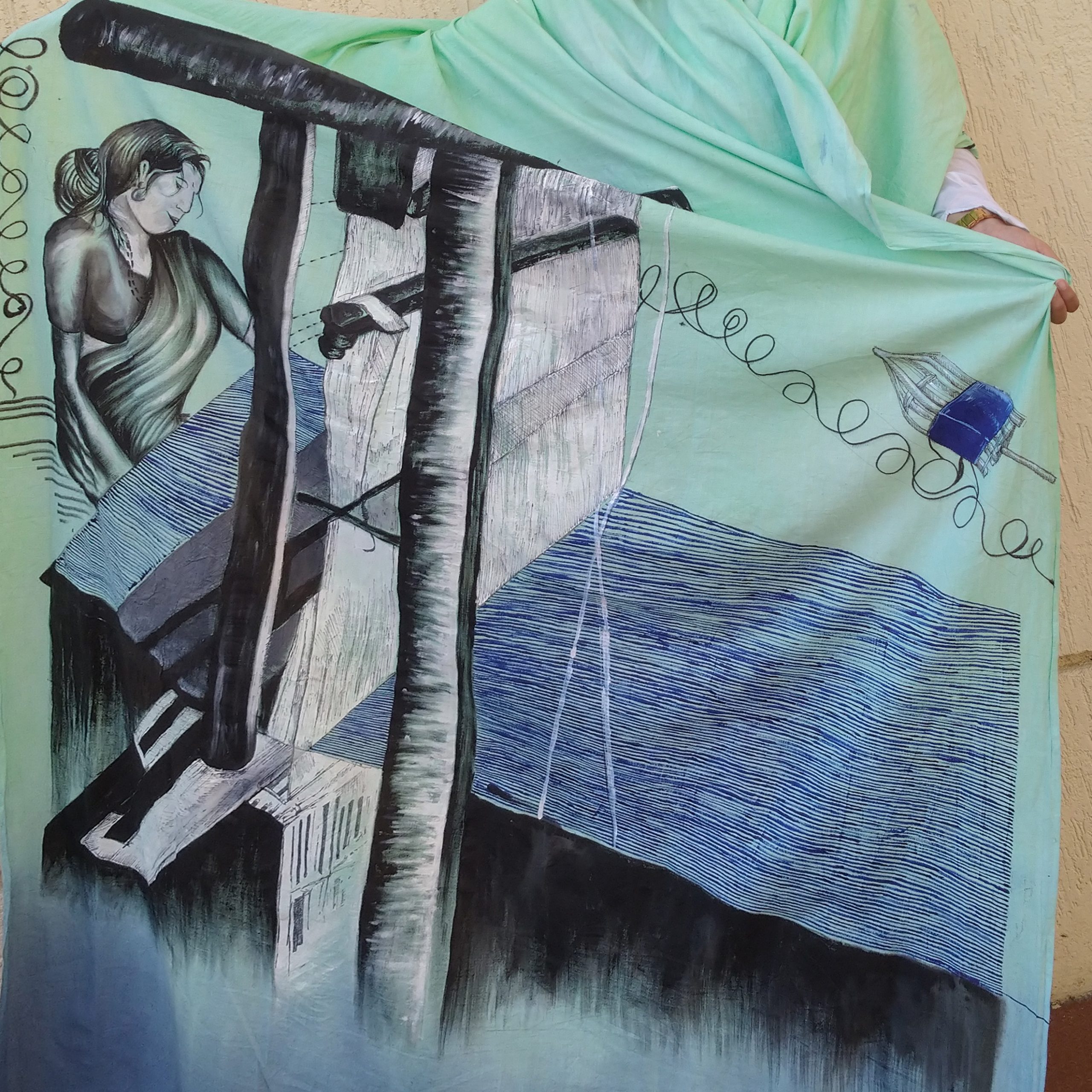A couple of weeks ago I had written about a Fashion show that my students and I worked on. This was a part of the annual celebrations at the school with different departments broadly interpreting the theme of the fest. I felt that it would be an apt venue to raise questions regarding the Authorship of Fashion. Hailing from a department where my students do not know apparel design or manufacturing, it is quite a task each year. However, this year we were determined to create a collection instead of just styling sourced garments. We decided to keep it simple and doable. Hence, tie dye was the technique of choice for the collection.

Concept Note of the collection – Authorship of Fashion
The word Coadunate refers to growth. As we live in a more than human world, human progression is dependent on our harmony with nature. Man can no longer divide nature and culture into binaries but be a dreamer, a creator, a maker. This bohemian collection celebrates jewellery makers, spinners, weavers, dyers, artists, crafters, designers. The authorship of fashion belongs to them all.

A designer might design a garment on paper but several others including farmers, spinners, dyers, weavers, tailors, and embroiderers need to contribute to making that garment. The authorship of fashion does not belong to one person alone. We focussed on makers and celebrated them in different ways. This was the most practical way to discuss Authorship of Fashion. Weavers were shown as illustrations, the hand dyeing that we did was an ode to the dye industry. Of course, there is enough handmade jewellery and accessories to salute the jewellery artists.

To Tie or to Dye
Tie and Dye or even stock/garment dyeing for that matter is a fun exercise. Working out colour palettes, dye proportions and experimenting with various types of fabrics is interesting. It is also an inexpensive form of value addition to garments which is crucial if you have a minuscule budget like us. Also, the dye penetration differs from fabric to fabric. By using the same dye on various cotton blends we were able to create a variety of fabrics.

To minimize apparel construction, draped garments like sarees, dhotis and half sarees were preferable. This also allowed us to work with dip dyeing. Our initial colour palette was green, yellow and blue. However, as we proceeded red tones took prominence over blues. In fact we did not use the fully blue garments at all.

Jewellery
Students themselves tried making accessories for the show and when that didn’t work, they called me the night before the show for jewellery. While I had a few existing pieces, I felt that I needed to make more. I whipped up a pair of wired sunglasses, four earrings and a necklace to add to the mix. You can see all the earrings in their glory in this paper stone earrings post.

Makeup
The plan was to do colour swept eyes, with white dots over the eyebrows. The hairdo was braids/pony or gelled hair. As with everything else that can go wrong, things went wrong with our show too. Makeup did not happen as planned and dressing got delayed. The show stopper had to walk with the saree wrapped around and not draped properly. It was a mess backstage. But reality, which show doesn’t have all that? That is the part that teaches you how to work smartly and efficiently. So we did, and put on a show as best as we could walking to “Macareena!” Do check out some on stage pictures.

While I might have thought of the idea and built the collection, it was my students who did everything else. From making the clothes and accessories to choreography and music it was a team effort. If you like fashion shows and particularly student shows, please do take a look at 2018’s no labels show here.
Rosantia, this post is for you. I hope you enjoyed reading it.



2 responses to “Authorship of Fashion”
Thank you, Divya! I was keenly interested in the backstage details because we all have a faint idea what is really going on there (from TV shows mainly). I like the concept and the models look so professional. Love the glasses – definitely eye-catching! I even envy your students a bit – this is an awesome and exciting experience for them!
Thank you. All the models are students. Anything that can go wrong will go wrong backstage. But working backstage for a ramp show can teach you more about planning, time management and quick thinking than any management course ever will.